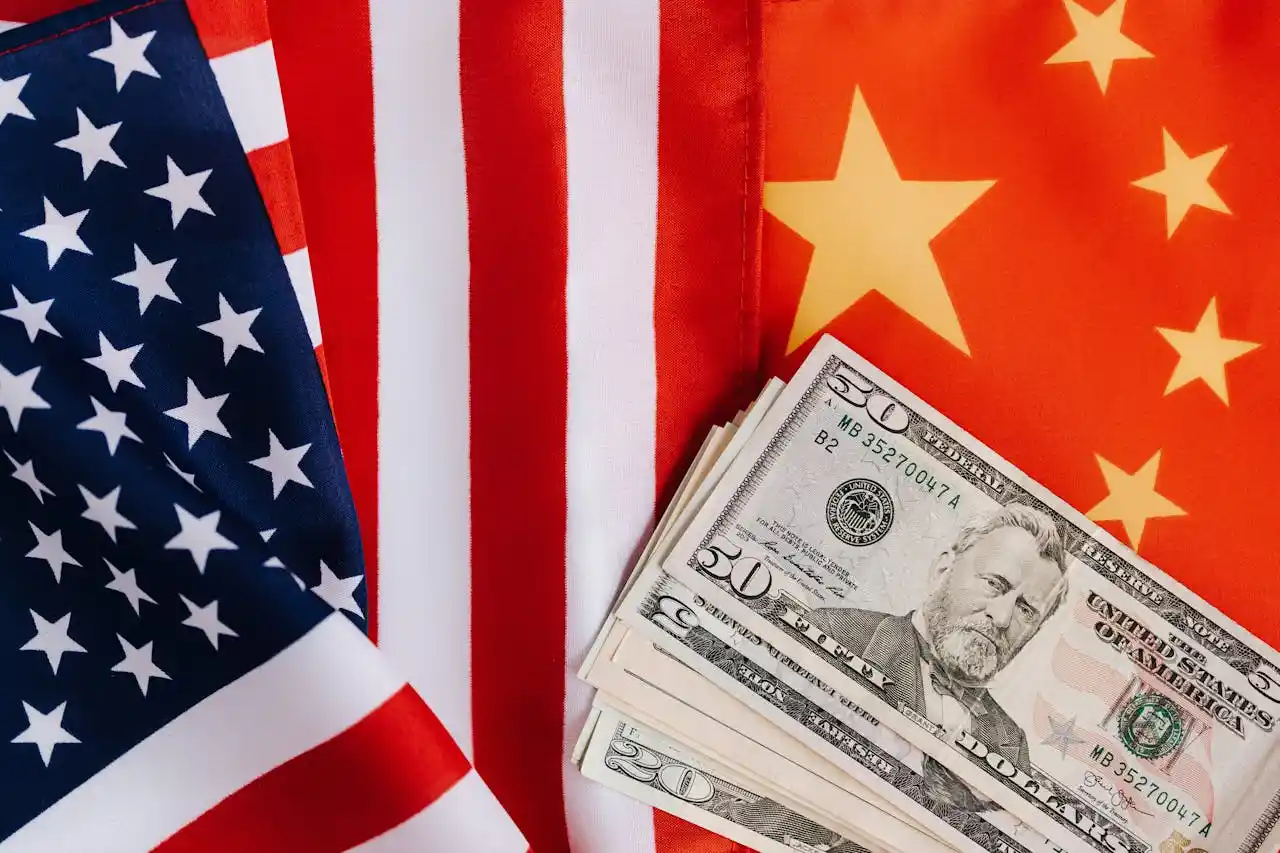
The United States is standing at a pivotal moment as it prepares for the 2024 Presidential Election. US Economic Crisis, challenges, including rising unemployment, inflation, and tax reform debates, are the top issues influencing voters and candidates alike. With a volatile economy, regional politics are also intensifying, setting the stage for what could be a defining moment in US history.
This article explores the causes behind the economic crisis, its impact on unemployment and taxes, and the critical role these factors will play in the 2024 election.
Understanding the US Economic Crisis
Historical Perspective of Economic Crises in the US
The United States has faced numerous economic crises throughout its history. From the Great Depression in the 1930s to the financial meltdown of 2008, each crisis has shaped the nation’s economic policies and social landscape. The current crisis, although different in nature, draws parallels to these past events in terms of its long-lasting impact on employment, wealth distribution, and governmental intervention.
Current Economic Landscape Post-Pandemic
The COVID-19 pandemic created an unprecedented economic disruption that affected industries across the board. While some sectors have recovered, others continue to struggle. The federal government poured trillions of dollars into stimulus packages to keep the economy afloat, but rising inflation and supply chain disruptions are ongoing challenges that remain unsolved.
Inflation and Rising Costs of Living
Inflation has become one of the major economic hurdles facing the US today. Prices for goods and services have skyrocketed, squeezing middle-class and lower-income families the hardest. The Federal Reserve’s efforts to control inflation through interest rate hikes have had mixed results, creating uncertainty about future economic stability.
Supply Chain Disruptions
Global supply chains were severely impacted during the pandemic, and many industries are still grappling with shortages in critical components like semiconductors, raw materials, and even labor. This disruption has led to increased production costs, further exacerbating inflation and causing delays in manufacturing across industries such as technology and automobiles.
Unemployment in the United States
Job Losses Due to the Pandemic
The pandemic-induced recession led to massive job losses, especially in service sectors such as hospitality, retail, and travel. While unemployment rates have improved since the peak of the pandemic, millions of Americans are still either unemployed or underemployed, contributing to wage stagnation and increasing economic inequality.
The Shift to Remote Work and Gig Economy Jobs
Another significant change in the labor market has been the shift to remote work and the rise of the gig economy. Although this trend has provided flexibility to workers, it has also created new challenges related to job security, benefits, and wages. Many traditional industries, particularly in urban centers, are experiencing long-term declines as more people opt for freelance work or move away from major cities.
Labor Market Shortages and Skills Gaps
Despite high unemployment numbers, some industries are facing labor shortages due to a skills gap in critical sectors like technology, healthcare, and manufacturing. Employers are struggling to fill positions that require specialized training or technical expertise, and this imbalance is contributing to wage inflation in certain areas while others stagnate.
The Role of Taxes in Economic Policies
Tax Reforms by Previous Administrations
Over the past decade, tax reform has been a hotly debated issue in Washington. The Tax Cuts and Jobs Act of 2017 under the Trump administration aimed to reduce corporate tax rates to stimulate business investments. While proponents argued that it boosted economic growth, critics claimed that it primarily benefited wealthy corporations and widened the income gap.
Corporate Taxation and Its Effect on the Economy
Corporate taxation continues to be a focal point of economic debate. While higher corporate taxes are seen as a way to generate revenue and address deficits, they can also deter investment and job creation. Striking a balance between fair taxation and economic growth will be a key challenge for any administration moving forward.
The Burden on Middle-Class Americans
Middle-class taxpayers often find themselves bearing the brunt of tax reforms. Rising healthcare costs, stagnant wages, and increasing property taxes have put significant pressure on this demographic, and tax policy changes have not always offered relief. Addressing this issue will be crucial as candidates pitch their economic plans for the upcoming election.
The 2024 Presidential Election
How the Economy Will Shape the Election
Economic issues have always played a crucial role in presidential elections, and 2024 will be no exception. Voters are primarily concerned about inflation, unemployment, and taxes, and these topics are likely to dominate debates. Candidates who can present clear and actionable plans to resolve the economic crisis will likely gain an advantage in the polls.
Key Economic Policies of the Major Parties
The Democratic and Republican parties have starkly different views on economic policies. Democrats tend to favor government intervention, higher corporate taxes, and social programs aimed at reducing inequality. Republicans, on the other hand, advocate for tax cuts, deregulation, and free-market solutions. The election will likely center on which of these approaches is more effective in addressing the current crisis.
Voter Priorities – Taxes, Jobs, and Inflation
For most voters, taxes, jobs, and inflation are the key issues in 2024. With rising living costs and wage stagnation, candidates will need to provide clear solutions to these challenges. Policies related to healthcare, social security, and education will also be under scrutiny as voters look for comprehensive economic plans.
Regional Politics in the United States
Political Divisions by Region
The United States has long been politically divided along regional lines, with the East and West coasts leaning more liberal and the Midwest and South leaning conservative. These regional differences often mirror economic disparities, with rural areas experiencing higher unemployment and lower wages compared to urban centers.
How Economic Factors Influence Regional Voting Patterns
Economic conditions play a significant role in regional voting patterns. States with high unemployment or industries affected by global trade agreements tend to favor protectionist policies, while wealthier regions with a tech-heavy workforce may prioritize innovation and economic growth. These divides will be critical in shaping the 2024 election map.
The Role of Swing States in 2024
Swing states such as Pennsylvania, Wisconsin, and Michigan will be pivotal in the 2024 election. These states have economies that rely heavily on manufacturing and are particularly sensitive to trade policies, tax reforms, and federal infrastructure investments. Candidates will need to focus on these key battlegrounds to secure victory.

Future Economic Outlook for the US
Potential Solutions for Reducing Unemployment
Reducing unemployment will require a multi-faceted approach, including job retraining programs, investment in education, and policies that encourage technological innovation. Addressing the skills gap is crucial for ensuring long-term economic stability.
The Impact of Tax Reforms on Economic Growth
Tax reforms that strike a balance between fair taxation and economic incentives are vital to sustaining growth. Candidates
will need to propose tax policies that boost economic growth while addressing the growing national deficit and providing relief for middle- and lower-income families. The debate over corporate taxes versus individual tax burdens will also continue to be a central issue in shaping future economic policies.
Balancing Economic Growth and Inflation Control
Inflation control is one of the most pressing concerns for the Federal Reserve and future administrations. The challenge lies in balancing policies that promote growth without driving inflation higher.
Tightening monetary policies, such as increasing interest rates, can help control inflation but may also stifle economic growth by making borrowing more expensive for consumers and businesses. Finding the right balance will be essential for stabilizing the economy in the long run.
Conclusion
The US economy is at a critical juncture, with numerous challenges on the horizon as the 2024 Presidential Election approaches. Issues like inflation, unemployment, and tax reforms will be at the forefront of voters’ minds, influencing not only their choice of candidate but also the future direction of the country.
While the economic crisis has exacerbated inequalities, it has also highlighted the need for effective policy solutions that can address both immediate concerns and long-term structural issues.
The intersection of economics and politics will play a decisive role in shaping the outcome of the 2024 election. Voters from different regions, industries, and socioeconomic backgrounds will weigh in on what they believe are the most pressing issues—whether it’s job creation, tax relief, or inflation control.
The party that can best communicate a clear and actionable plan to navigate these economic challenges is likely to gain a significant advantage.
As the election draws nearer, it will become clear just how much the economy influences not only voter behavior but also the overall direction of the United States as it strives to recover from the impacts of the pandemic and other global economic shifts.
US Economic Crisis





